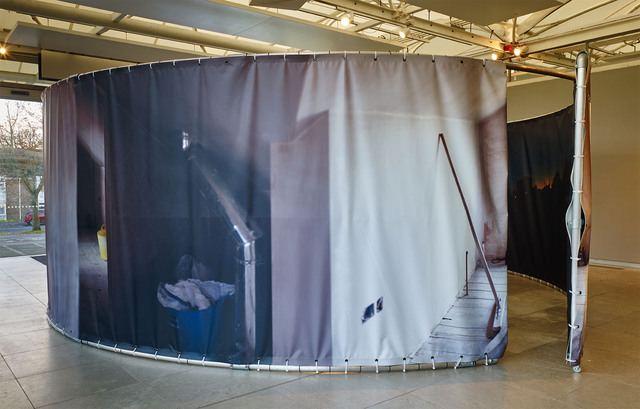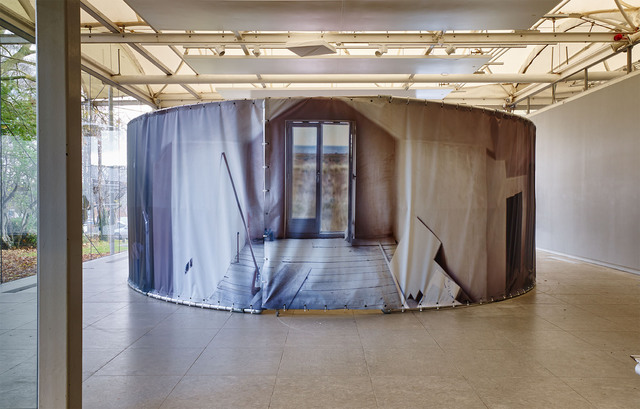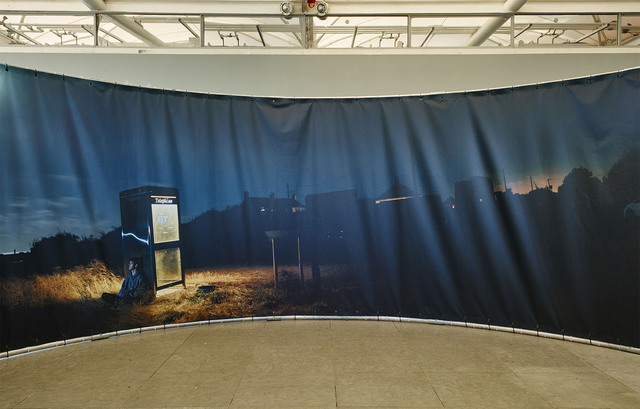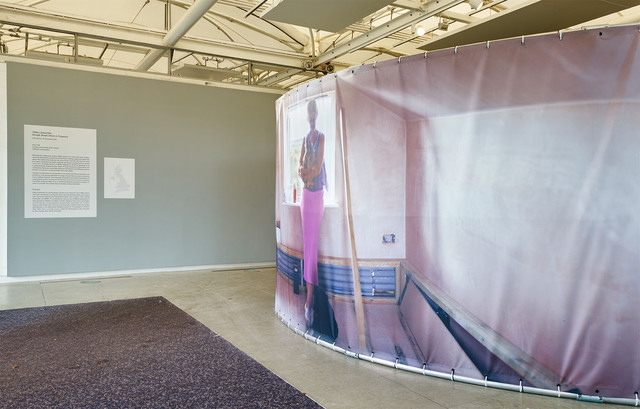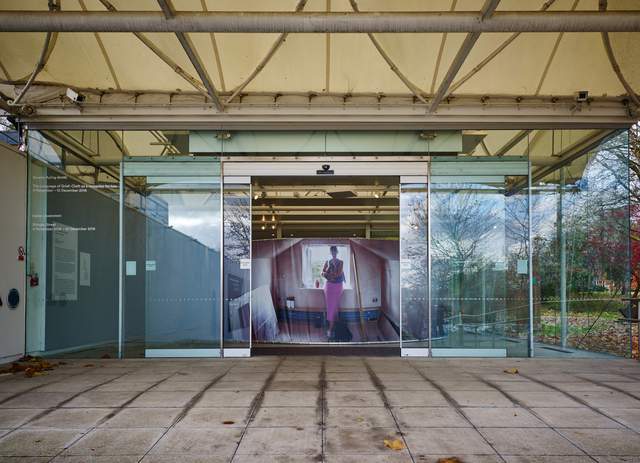Working with a panoramic camera, Heike Löwenstein creates 360-degree images, which go beyond the normal limits of the frame, adding a depth and detail that define the relationship between the environment and the self. Over the past four years, Löwenstein has been using this technique to photograph the coastal community of Shingle Street, in Suffolk. Intrigued by what first appeared to be a quintessentially English fishing village, through developing relationships and conducting interviews, Löwenstein became fascinated by the differing personal histories and desires contained within this small village.
Carefully orchestrated and manipulated, Löwenstein’s pictorial compositions are printed on vinyl and are attached to a large rotunda-like structure constructed from scaffold material. The imposing, immersive and physical dimension of Löwenstein’s work is reminiscent of historical panoramas and history painting, and offers what she refers to as a “phenomenological experience of place”, in order to consider the construction of identity and representation.
The main focus of the exhibitions is the realisation of two images from the series of works as a cylindrical structure referencing the historical panorama, the first mass medium. The structure has a diameter of 6 metres, the images are nearly 20 metres long and over 2 metres high. Visitors step into the installation to experience the image mounted on the inside, and they walk around the installation to experience the image on the outside. Other images are shown in two-dimensional large-size archival prints. Environmental sound is used subliminally to support the visuals.

